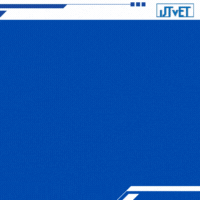Utilizing Chitosan Extracted From Shrimp Byproducts As A Bio-Coagulant For Treating Oily Waste Emulsions
Keywords:
Coagulation, Oily Waste Emulsion, ChitosanAbstract
Across sectors, the coagulation process is widely used to remove colloidal contaminants, particularly suspended particles like bacteria and organic debris. But because of their natural source and biodegradable nature, using bio-coagulants offers a more feasible option. With a monthly production range of 20 to 60 tones, this project focuses on the extraction of chitin and chitosan from shrimp waste with the goal of using chitosan as a bio-coagulant for the treatment of oily waste emulsions. The use of chemical coagulants, such as ferric chloride and aluminum sulfate, raises questions about their potential negative effects on the environment and human health. These coagulants are particularly difficult for smaller-scale enterprises to obtain. Therefore, the main goals of this project are to extract chitosan from shrimp waste and assess how well it works to remediate oily waste emulsions. Deproteinization, demineralization, and deacetylation processes are all included in the extraction process. Testing that comes after this evaluates oily wastewater by employing powdered and coarse chitosan, and coagulation processes are tested in jars. The findings demonstrate that powdered chitosan performs better than coarse forms, with an effectiveness of coagulation activity is 91.79%, fulfilling the project's goals. To improve chitosan's ability to cure oily waste emulsions, it is advised to adjust the dosage to 0.1g/ml – 0.15g/ml. This study highlights the possibility of using chitosan made from shrimp waste as an efficient and sustainable coagulation process substitute, posing a threat to traditional chemical coagulants. This strategy complies with green chemistry and sustainable industrial practices by optimizing environmental effects and utilizing natural resources.
Downloads
Published
Issue
Section
License
Copyright (c) 2025 International Journal Of Technical Vocational And Engineering Technology

This work is licensed under a Creative Commons Attribution-NonCommercial-ShareAlike 4.0 International License.
The content of The International Journal of Technical Vocational and Engineering Technology (IJTVET) is licensed under a Creative Commons Attribution 4.0 International license (CC BY NC ND 4.0). Authors transfer the ownership of their articles' copyright and publication right to the International Journal of Technical Vocational and Engineering Technology (IJTVET). Permission is granted to the Malaysian Technical Doctorate Association (MTDA) to publish the submitted articles. The authors also permit any third party to freely share the article as long as the original authors and citation information are properly cited.
















